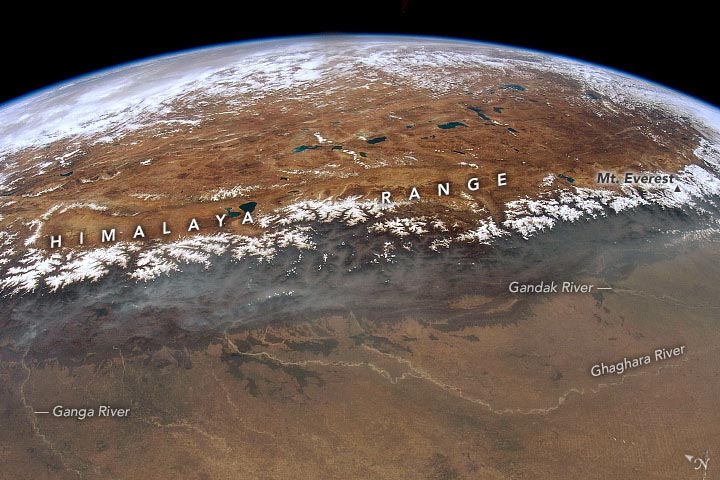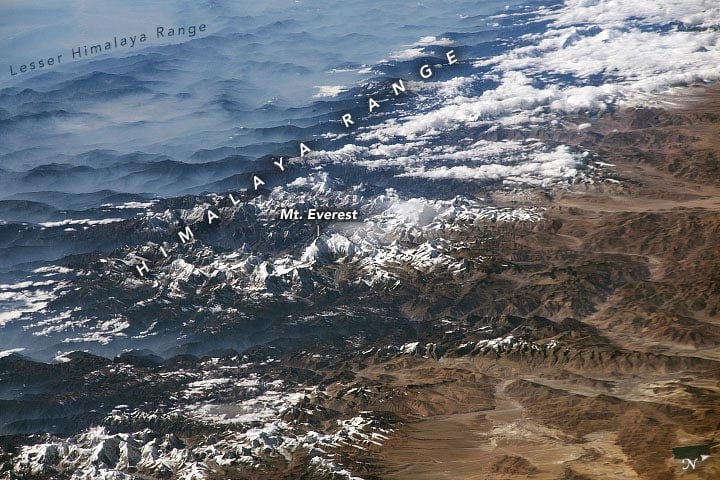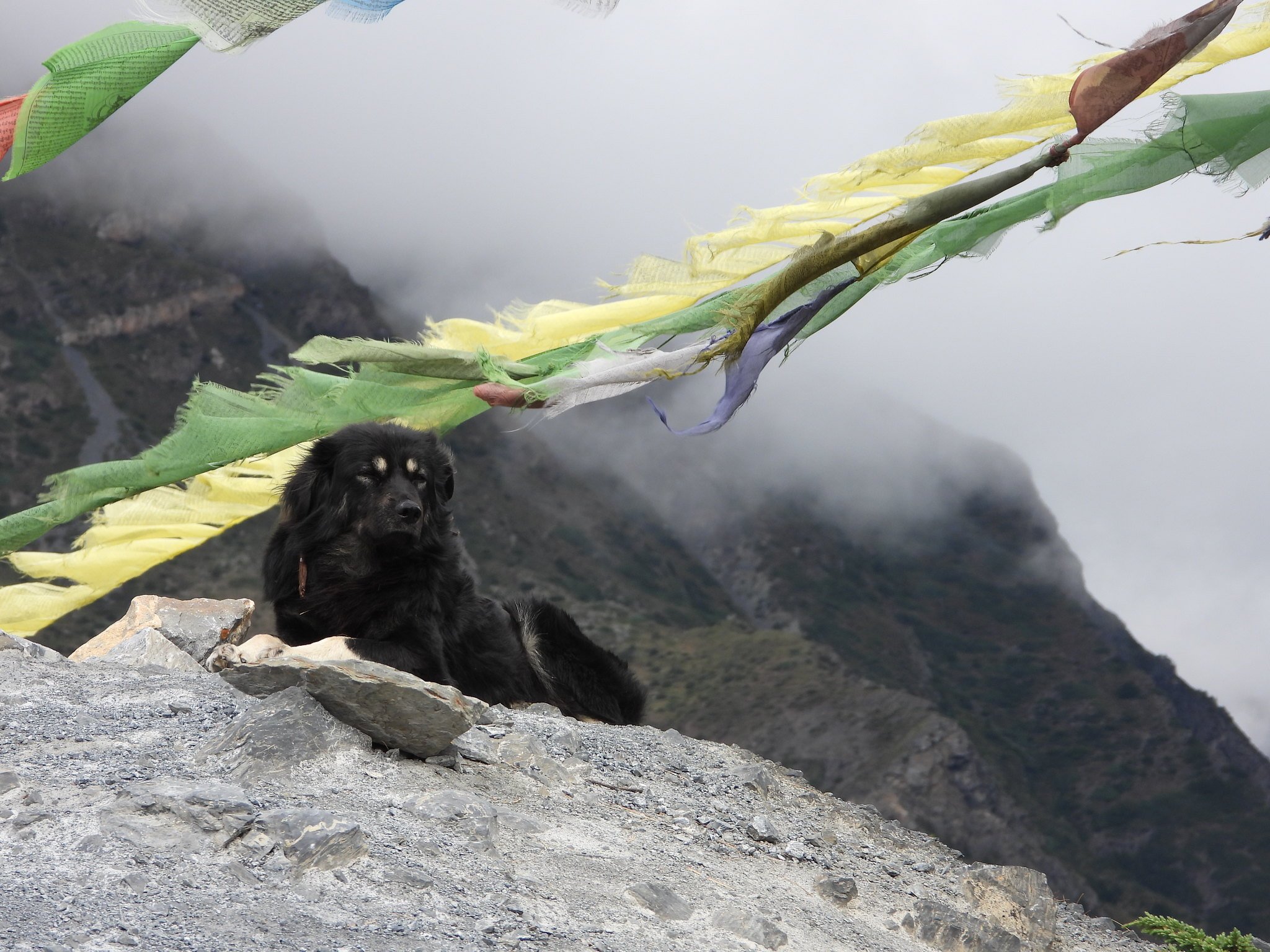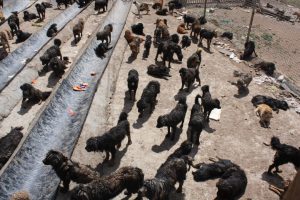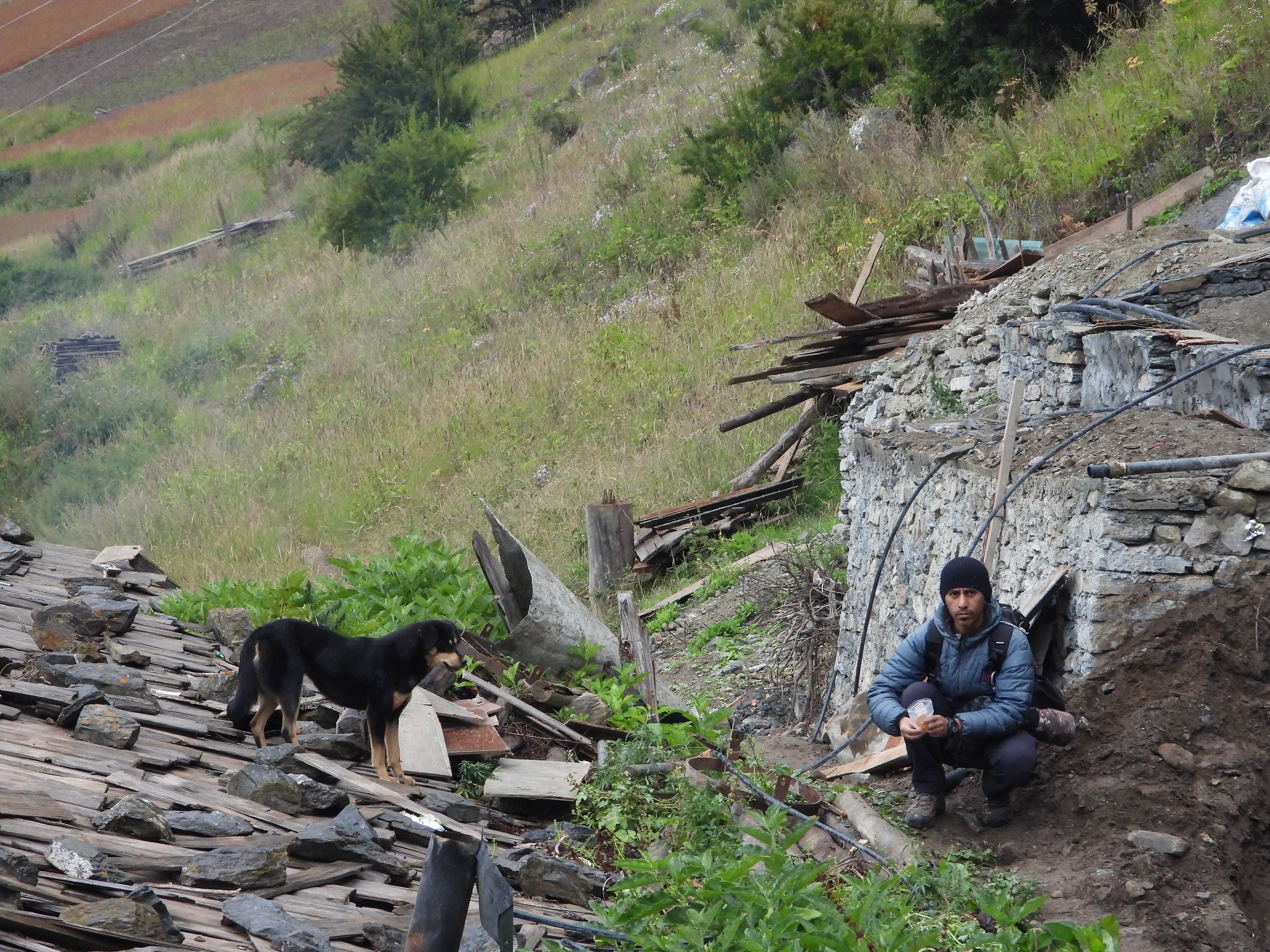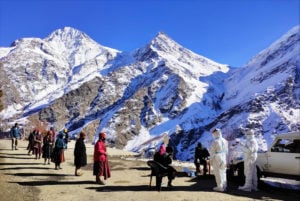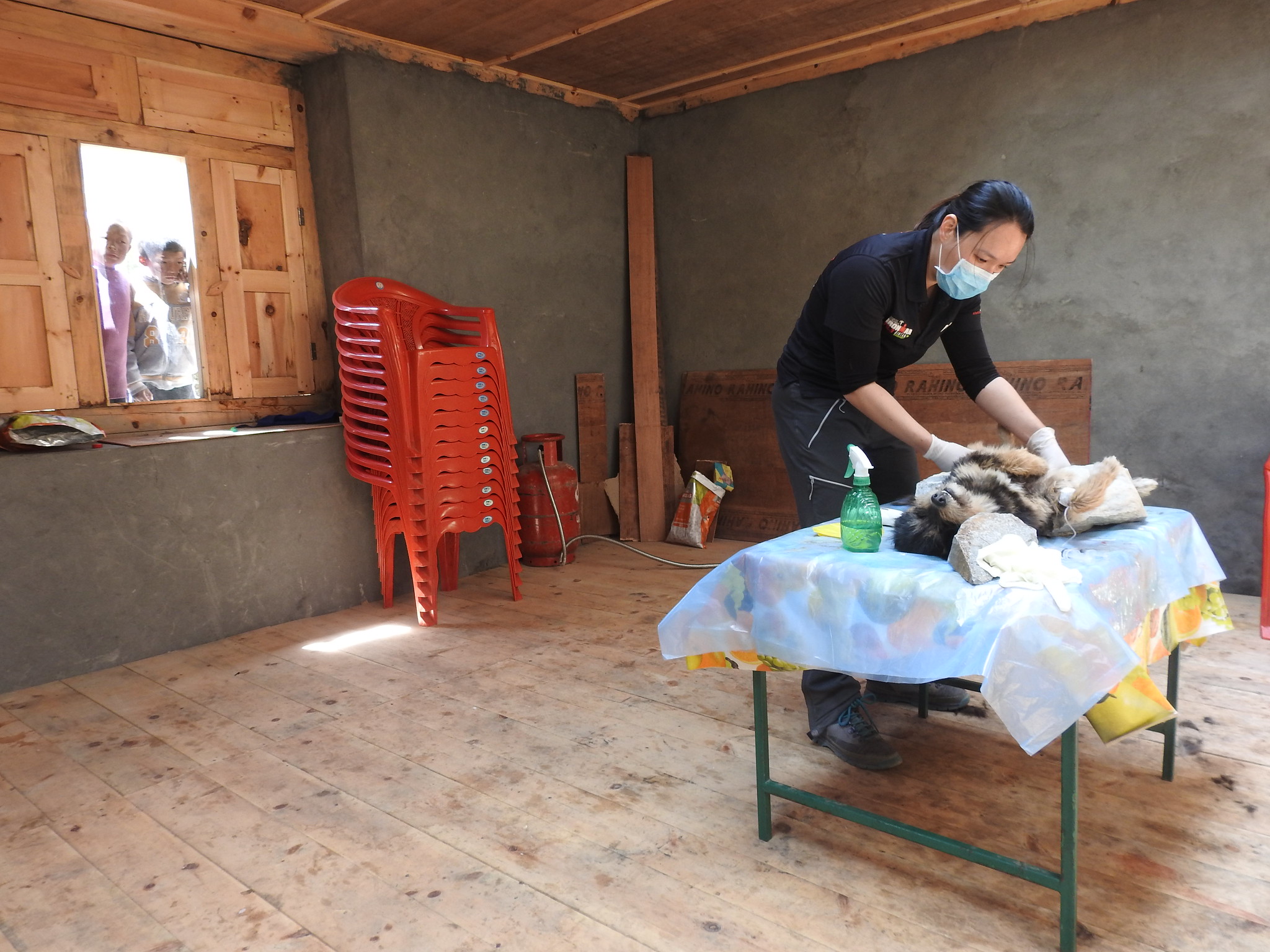To Adapt to a Changing Environment 400,000 Years Ago, Early Humans Developed New Tools and Behaviors
When the East African Rift Valley transformed dramatically, new weapons arose and trade expanded
:focal(807x601:808x602)/https://public-media.si-cdn.com/filer/16/fa/16fa738e-3e65-4f3f-9c84-21fc6a449469/a-21-dscn0079_aerial-photo-loc-b-2005-rpotts_jc-edits_web.jpg)
Four hundred thousand years ago, extreme environmental changes rocked the East African Rift Valley. Fresh water periodically dried up, and vast grasslands faded away—taking with them the large grazing animals hunted by early humans. But ecological instability didn’t drive people out of the region or into extinction. Instead, it sparked them to adapt with major leaps forward in their behavior and culture. Early humans developed more sophisticated stone tools and weapons, expanded trade networks, and even evidenced the growth of symbolic communication.
That’s the key finding of an eight-year-long study published today in Science Advances that revealed the ecological context behind changes in early human lifestyle as seen through artifacts. Richard Potts, director of the Human Origins Program at the Smithsonian’s National Museum of Natural History, and colleagues paired a sedimentary drill core holding a million years of Africa’s environmental history, with archaeological excavations from Olorgesailie, Kenya, to show these dramatic, simultaneous developments.
“Some pretty radical things were going on here,” says Potts. “A change began from reliable living conditions to an era of uncertainty and repeated disruption in those crucial conditions for life.”
Potts and colleagues spent nearly three decades studying 1.2 million years of human habitation at the Olorgesailie site. Until now the story has been one of two very different eras separated by a mysterious gap at a key point in prehistory. For 700,000 years, between 500,000 and 1.2 million years ago, life at Olorgesailie looked much the same. Thousands of tools and animal bones show that the same primitive stone Acheulean hand axes—sharpened but clunky hand-held chunks of rock—remained in vogue and large grazing mammals, the outsized relatives of zebras, elephants and even primates, inhabited the area.
Unfortunately, the geologic layers accumulated between about 320,000 and 500,000 years ago have long since washed away, with whatever evidence they once contained. That period turns out to be a key 180,000 year-long era of evolutionary flux. “The next time we pick up the story, 320,000 years ago, the hand axes are no longer around,” Potts explains. “They’ve been completely replaced by a new way of life and technology.”
As detailed in a trio of 2018 studies, which Potts and colleagues also authored, by 320,000-years-ago early humans had replaced fist-sized stone axes with smaller, sharper, more sophisticated blades and projectile points that evidenced Middle Stone Age technology. The cumulative behavior in the culture during the Middle Stone Age—modifying and improving upon the achievements of others—begins to appear regularly around Africa during this same period of time. And abstract thinking can be seen in the design of such tools. While making a hand ax basically involves improving an existing rock’s shape, making blades and points means the toolmaker must have begun by first visualizing the ideal shape of such a tool, then reworking the rock to serve that purpose
The materials chosen to craft some of those tools weren’t available locally. They evidence the expansion of ancient trade networks. Early humans sourced black obsidian for projectile points from at least 50 miles away. They also began to use color, chiseling red or black manganese rocks likely used to make pigments and adorn their weapons, or themselves—a practice scientists often associate with the development of symbolic thought.
Based on the recovery of thousands of bones, the area’s animal inhabitants changed as well. One of the 2018 studies concludes that a staggering 85 percent of local mammal species turned over during the same key period of ecological transition and changing early human behavior. “The large grazers disappeared after hundreds of thousands of years of typifying East African ecosystems, and they were replaced by animals more like what you’d see on safari today,” Potts explains. “What instigated such a change? [At the Olorgesailie site] we were missing the layers that could tell us what happened.”
To reconstruct the environment in which these changes occurred, the team turned to a site just 15 miles away, in the adjacent Koora basin—where the depression of an ancient lake basin lies can be seen beneath a grassy plain. In 2012, Potts’s team engaged a Kenyan company to drill a 456-foot-deep hole, less than two inches in diameter, and extract a sedimentary drill core preserving a record of one million years of the East African Rift Valley’s environmental history.
For nearly a decade, dozens of experts from institutions around the world delved into the core, analyzing microscopic organisms and plant remnants, and tracking seasonal and rainfall shifts in soils, to chart how the region’s environment changed over the past one million years. They found out that after hundreds of thousands of years of stability, dramatic shifts occurred beginning about 400,000 years ago—extreme swings occurred between wet and dry periods, lakes shrunk and new types of vegetation periodically replaced large grasslands. Geological evidence at Olorgesailie also shows how some 400,000 years ago earthshaking tectonic activity began to reshape the region—segmenting the landscape, raising hills and cliffs, and draining huge lakes—shifts that made the area more sensitive to changes like more variable rainfall.
Paleoanthropologist Chris Stringer, of the Natural History Museum in London, notes that previous efforts to explore how ancient environment influenced evolution have been compromised because cores from distant oceans or lakes paint a global picture but miss how ecosystems changed locally, where ancient people lived. “It’s what’s been needed from East Africa for a long time, to have a core that ties in closely to a site with good evidence of human occupation covering a long period of time,” says Stringer, who wasn’t involved with the research.
Without large plains to sustain them the large grazing relatives of zebras, giraffes and elephants were replaced with smaller specimens. Baboons, for example, shrunk to only about one-fourth the size of their predecessor Theropithecus oswaldi. And without the giant “lawnmowers of the Pleistocene” and their constant browsing, entirely different vegetation sprouted. This one-two punch meant that early humans had to learn new ways to gather foods, as well as ways to hunt different animals.
Stringer notes that early humans were completely attuned to their local environment and knew how to exploit its plant and animal resources on a daily basis. “So changes in the environment meant that they had to learn completely new patterns of behavior and that’s an obvious pressure on the human population to change,” he says. “If hunter gatherers don’t adapt to the environment, they die.”
Since ecological changes have also occurred in more recent times, the authors pored over studies of more than 150 historically known and living hunter gatherer communities to see how they responded in similar situations. When resources become unpredictable, it seems, they often tend to respond in the same way the Olorgesailie inhabitants did. They’ve been observed to forage more widely, extend trading networks and invest more time and energy in their tools and technology.
University of Cambridge archaeologist and geochronologist Nick Blegen cautions that if ecological variability was a key driver behind the behavioral and cultural changes in early humans, we should also expect to see evidence of that variability at a wider sampling of early human fossil sites. So far, there aren’t enough quality environmental reconstructions like this one to know.
“As past environments are reconstructed from many East African rift basins, will they all show a shift from stable lake environments to variable lake and grassland ecosystems at the same time as hominins shifted from large handheld tools to more diverse technologies?” asks Blegen, who wasn’t involved in the research. “If so, then Potts et al. are on to something. If not, then we cannot blame an inconstant environment for everything, and we’ll have to find another explanation, or explanations, for the evolution of modern human behavior.”
And while more modern human behavior clearly developed at the site another major question remains—who exactly might these adaptable people have been?
Though tens of thousands of stone tools have been found, the site has so far yielded only one described early human fossil, a partial brain case of Homo erectus from about 900,000 years ago. But this species has only been associated with more primitive tools and isn’t known to have survived in the area as late as 320,000 to 500,000 years ago.
No fossils can be found from the key transitional period at the site because the layers that once might have held them have vanished. Homo naledi lived in Africa during this period but hasn’t been found associated with tools. Homo heidelbergensis likely persisted into the Middle Stone Age, but it’s not known if they ever adopted more modern tools.
Interestingly, both genetic studies and the oldest-known fossil evidence suggest that our own species, Homo sapiens, may have arisen during this time period, though perhaps not here in the southern Kenya rift. Middle Stone Age technology like that found at the Olorgesailie site is typically associated with fossils of Homo sapiens rather than other species. “It’s like these components are here in the behavior, in the archaeological record, that look like the root of human adaptability and that this occurred at the outset of our own species,” Potts says. “I think that we’re potentially dealing with some representative of an ancestral group to H. Sapiens.”
/https://public-media.si-cdn.com/filer/09/33/093310e9-7728-4118-9837-88902f1d11ef/a-22-olorgesailie-achulean-handaxes-msa-points-pigments-white-background_web.jpg)
/https://public-media.si-cdn.com/filer/55/db/55db9e5e-5597-4430-ba9d-cb886ab825ed/b-7-olorg2012_img_13740188_jclark_web.jpg)
:focal(959x612:960x613)/https://public-media.si-cdn.com/filer/fd/5a/fd5a0948-8af9-4998-8d57-6de55340aae0/1_schaedel_killig.jpeg)
/https://public-media.si-cdn.com/filer/db/08/db08d525-e9a9-418d-a8ed-d41c1c175d8f/csm_2_schaedel_killig_7462d36ad0.jpeg)
 Buddhist nuns walk past a poster showing Chinese President Xin Jinping and former Chinese leaders Jiang Zemin, Mao Zedong, Deng Xiaoping and Hu Jintao in Potala Palace square in Lhasa, during a government-organised tour of the Tibet Autonomous Region, China, October 15, 2020. Picture taken October 15, 2020. REUTERS/Thomas Peter (REUTERS)8 min read . Updated: 31 Oct 2020, 08:15 AM ISTBloomberg
Buddhist nuns walk past a poster showing Chinese President Xin Jinping and former Chinese leaders Jiang Zemin, Mao Zedong, Deng Xiaoping and Hu Jintao in Potala Palace square in Lhasa, during a government-organised tour of the Tibet Autonomous Region, China, October 15, 2020. Picture taken October 15, 2020. REUTERS/Thomas Peter (REUTERS)8 min read . Updated: 31 Oct 2020, 08:15 AM ISTBloomberg